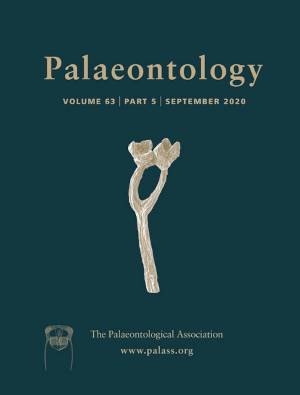Reg. Charity No. 1168330

The magnitude and ontogenetic patterns of intraspecific variation can provide important insights into the evolution and development of organisms. Understanding the intraspecific variation of organisms is also a key to correctly pursuing studies in major fields of palaeontology. However, intraspecific variation has been largely overlooked in ectocochleate cephalopods, particularly nautilids. Furthermore, little is known regarding the evolutionary pattern. Here, we present morphological data for the Cretaceous nautilid Eutrephoceras dekayi (Morton) and the modern nautilid Nautilus pompilius Linnaeus through ontogeny. The data are used to describe conch morphology and to elucidate the evolutionary patterns of intraspecific variation. We discovered a similar overall pattern of growth trajectories and the presence of morphological changes at hatching and maturity in both taxa. We also found that intraspecific variation is higher in earlier ontogeny than in later ontogeny in both taxa. The high variation in earlier ontogeny may imply increased flexibility in changing the timing of developmental events, which probably played an important role in nautilid evolution. We assume that the decrease in variation in later ontogeny reflects developmental constraints. Lastly, we compared the similarity/dissimilarity of ontogenetic patterns of variation between taxa. Results reveal that the similarity/dissimilarity of the ontogenetic pattern differs between E. dekayi and N. pompilius. We conclude that this shift in the ontogenetic pattern of variation may be rooted in changes in the developmental programme of nautilids through time. We propose that studying ontogenetic patterns of intraspecific variation can provide new insights into the evolution and development of organisms.